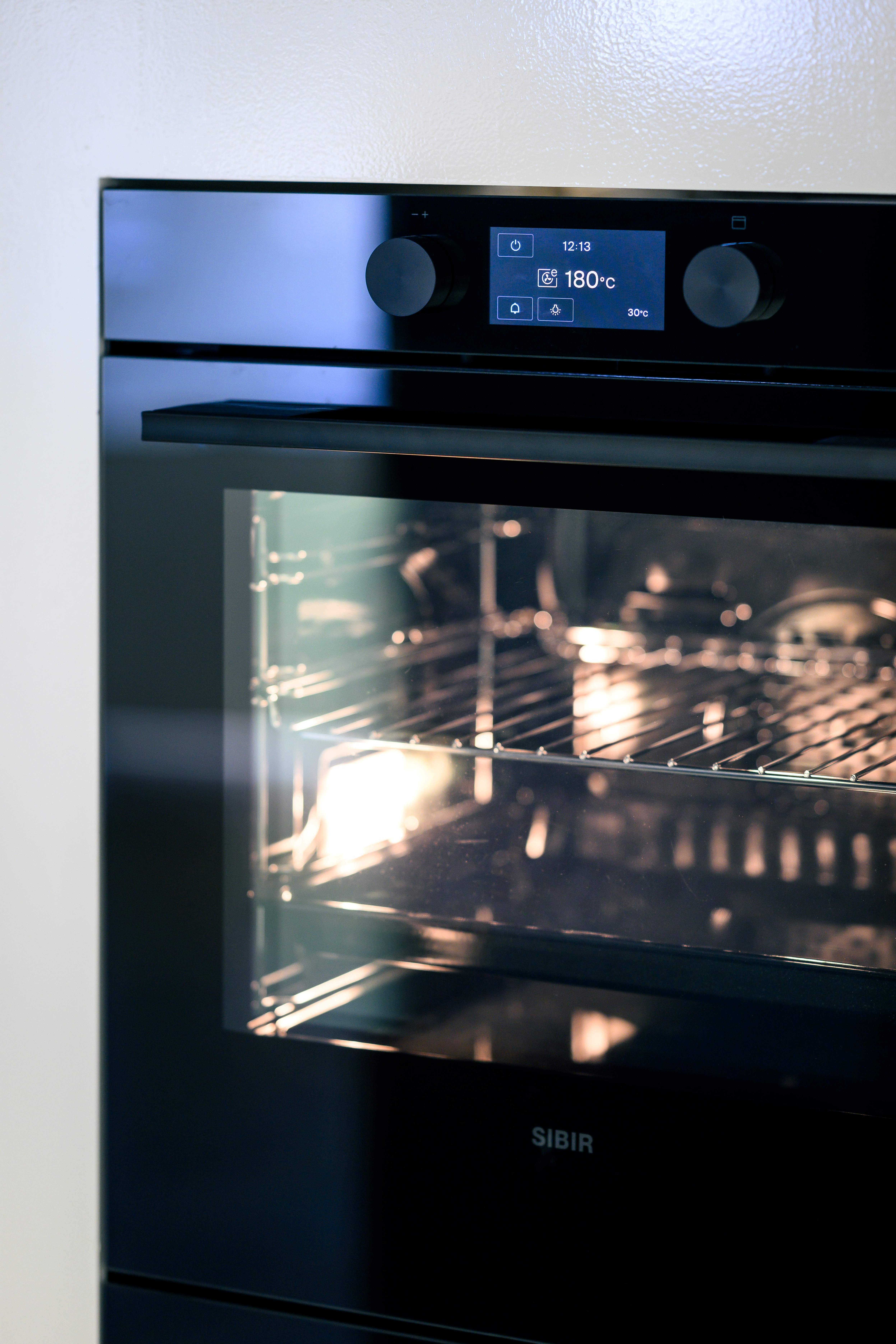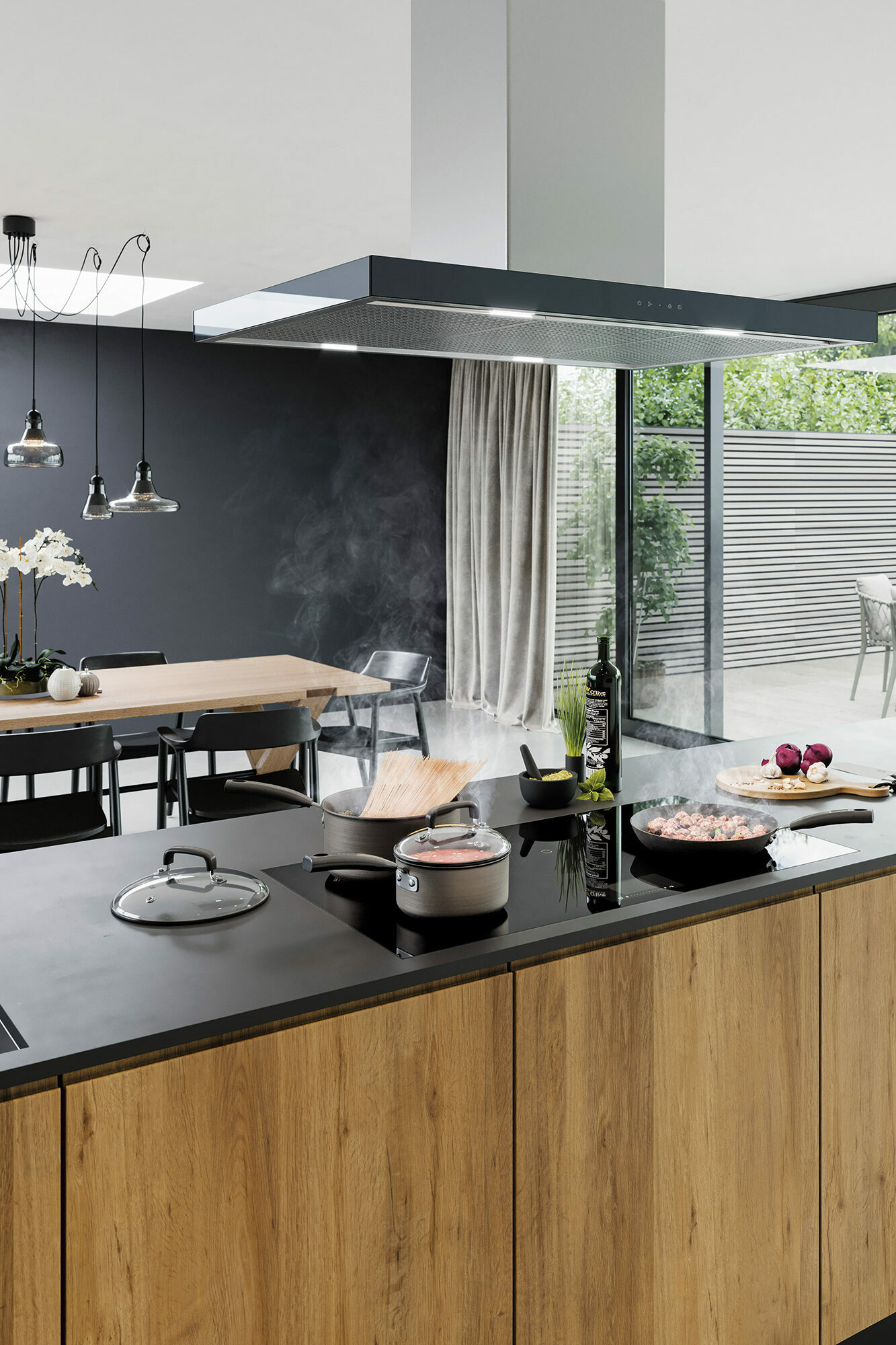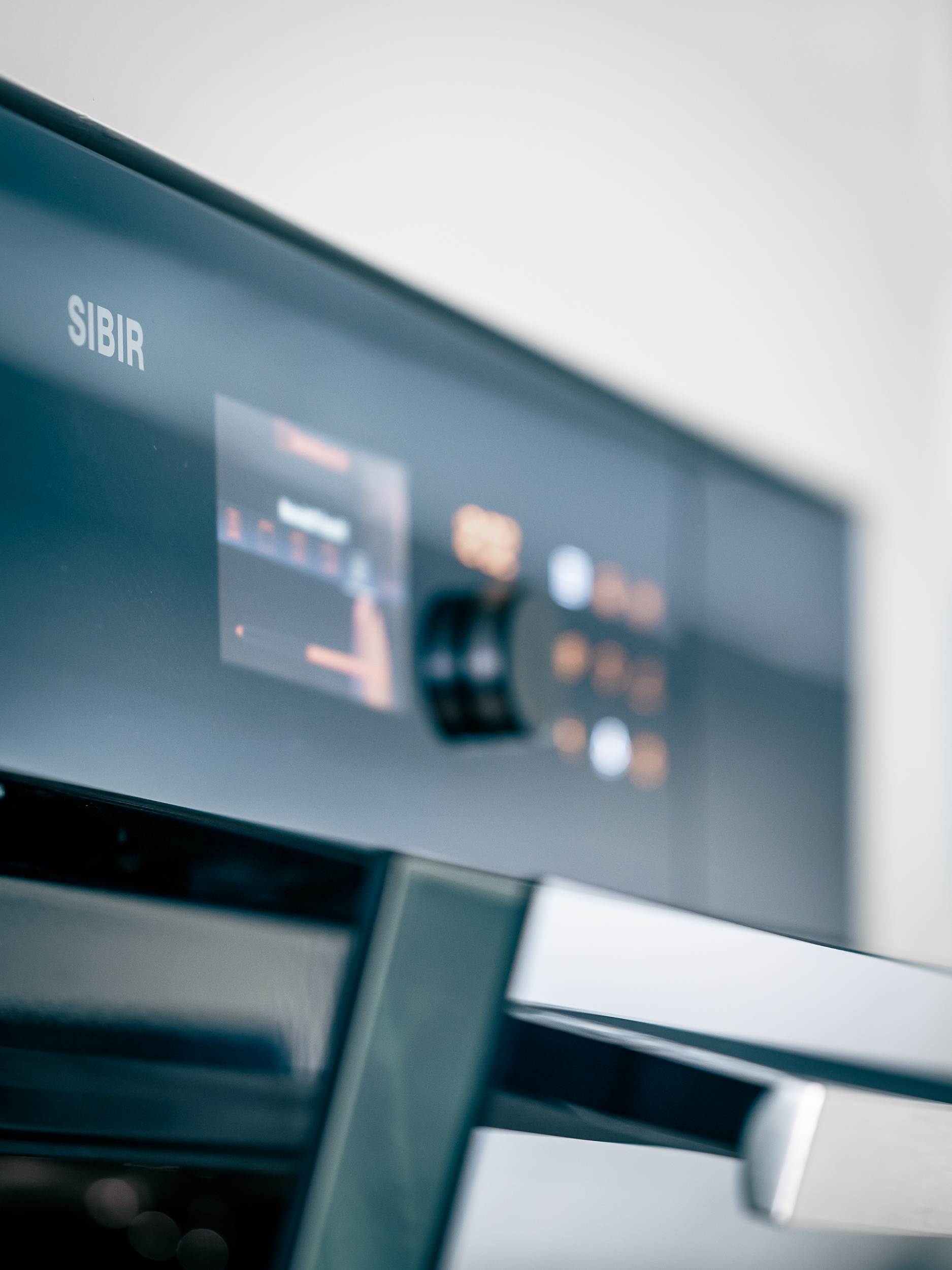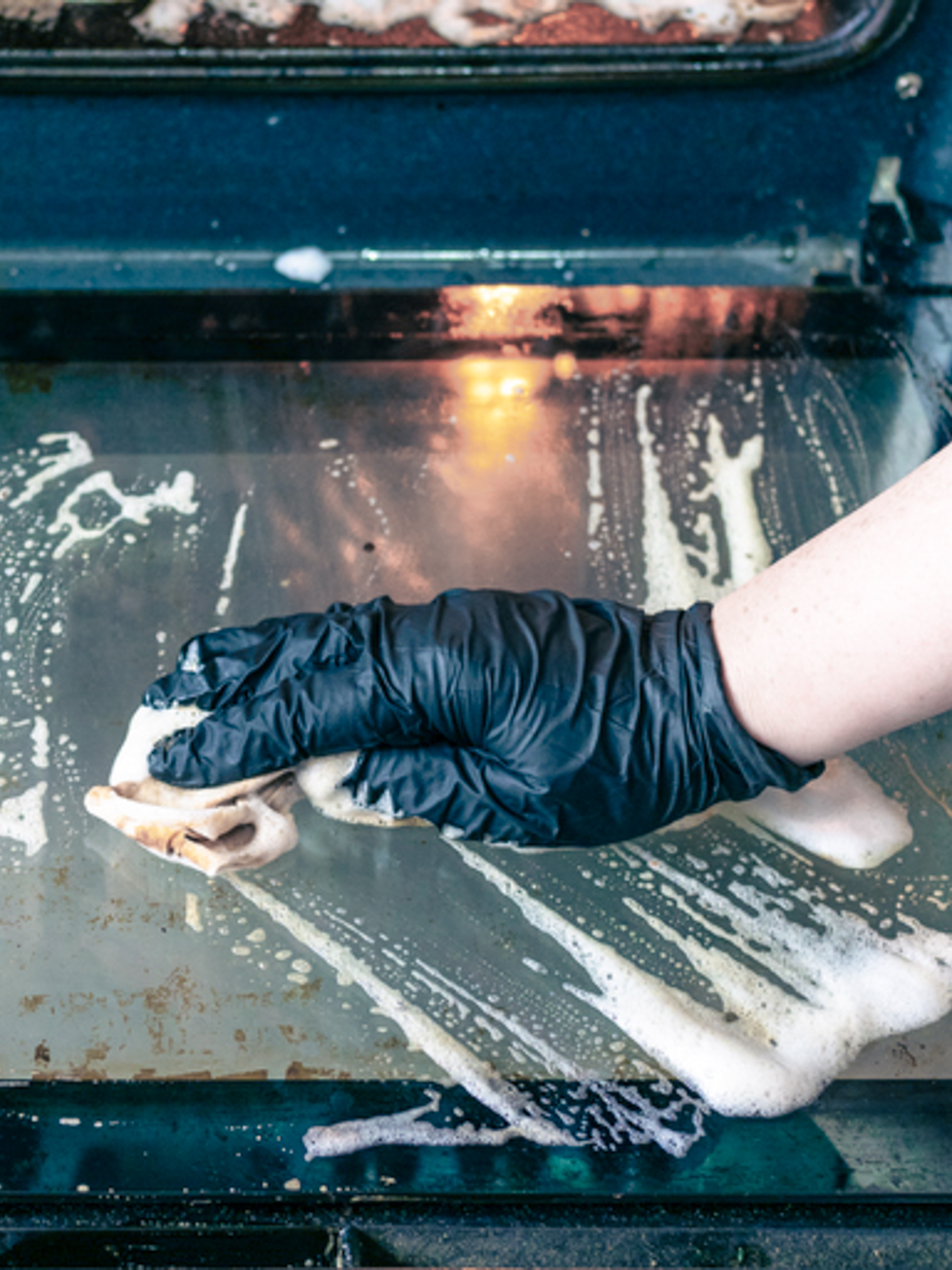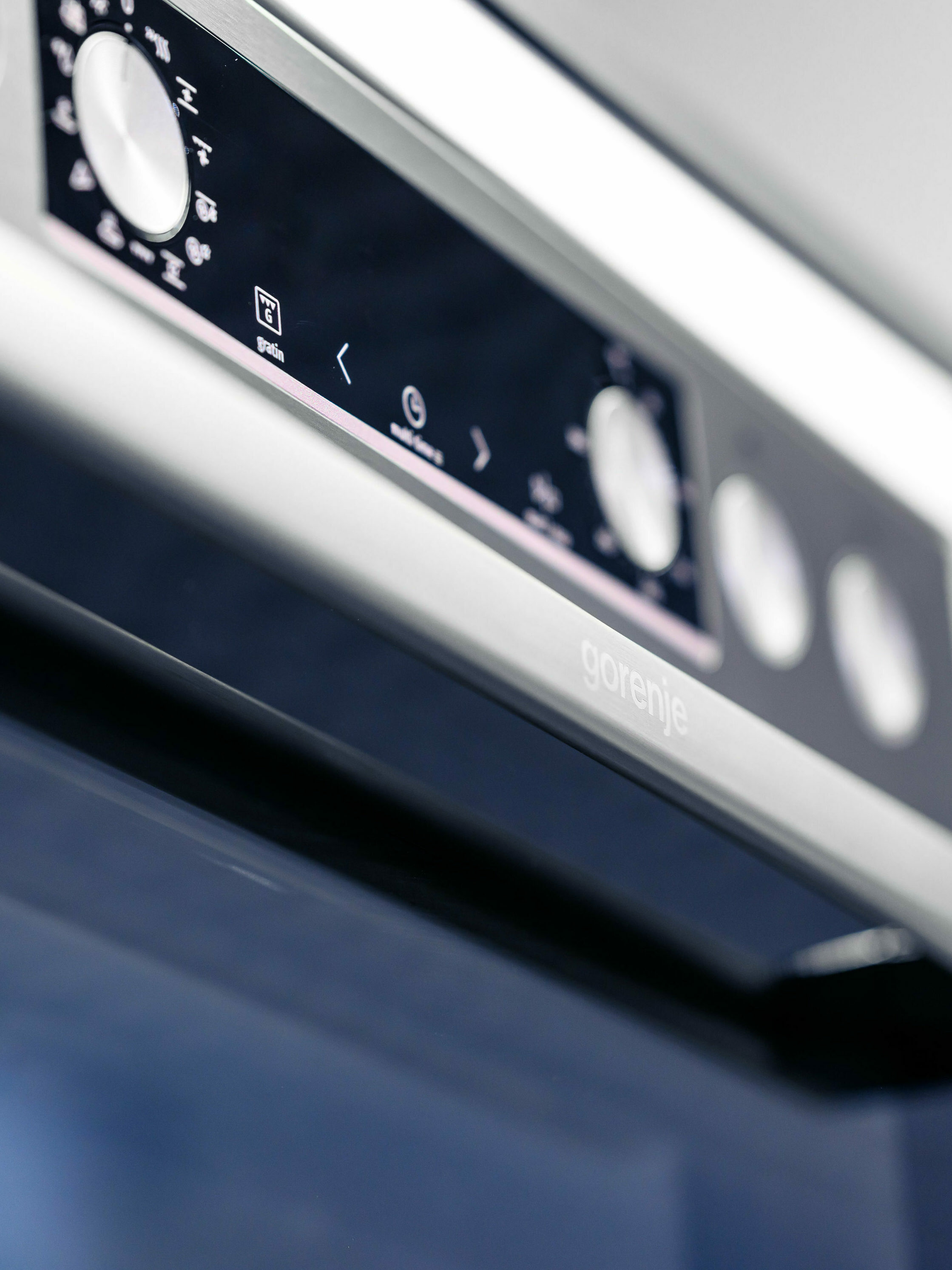How does pyrolysis work in an oven?
The most common kind of self-cleaning is called pyrolysis. During this process, the oven heats up to temperatures of up to 500°C, far hotter than when cooking any dish. At this temperature, organic residues are baked into ash. What remains is a fine film of dust that can easily be removed with a damp cloth after the oven cools down.
What should you bear in mind when using the pyrolysis function?
While pyrolysis is a convenient function, there are some things to keep in mind. You should keep the room well-ventilated during the process, as the high temperatures can produce odours and smoke. Pets (especially birds!) should not be allowed in the room. Important: remove any larger grease and oil stains as well as baked-on food remains beforehand. Refrain from using chemical cleaners as their residues can react to the heat of pyrolysis, damage the enamel and release harmful vapours. Remove all baking trays, grates, anti-stick parts and accessories before cleaning unless the manufacturer explicitly allows them to remain in the cooking chamber.
What happens if baking trays and accessories are left in the oven during pyrolysis?
If baking trays, support grates, pull-out racks or crockery are left in the cooking chamber, this may result in discolouration, rough surfaces and functional impairments affecting the smooth running of pull-out racks, for example. To avoid such damage, all objects should be removed before starting pyrolysis.
How long does it take for an oven to clean itself?
Depending on the model and amount of dirt, pyrolysis can take between two and five hours. Modern appliances often adjust the cleaning duration to the amount of dirt automatically.
Is pyrolysis dangerous?
In principle, pyrolysis is safe – provided that the oven is kept in faultless condition and used properly. The door automatically locks during cleaning to prevent burns. However, it is still important to keep children and pets away from the oven, and the area should be free of combustible material.
How do you clean the door of a self-cleaning oven?
Not all parts of the oven door are automatically cleaned. Sometimes grease or crumbs can get between the glass panes. Many manufacturers enable the door to be disassembled (please follow the instructions!) to clean these parts separately. When it comes to external surfaces, use a microfibre cloth and a mild cleaner, and avoid scouring agents.
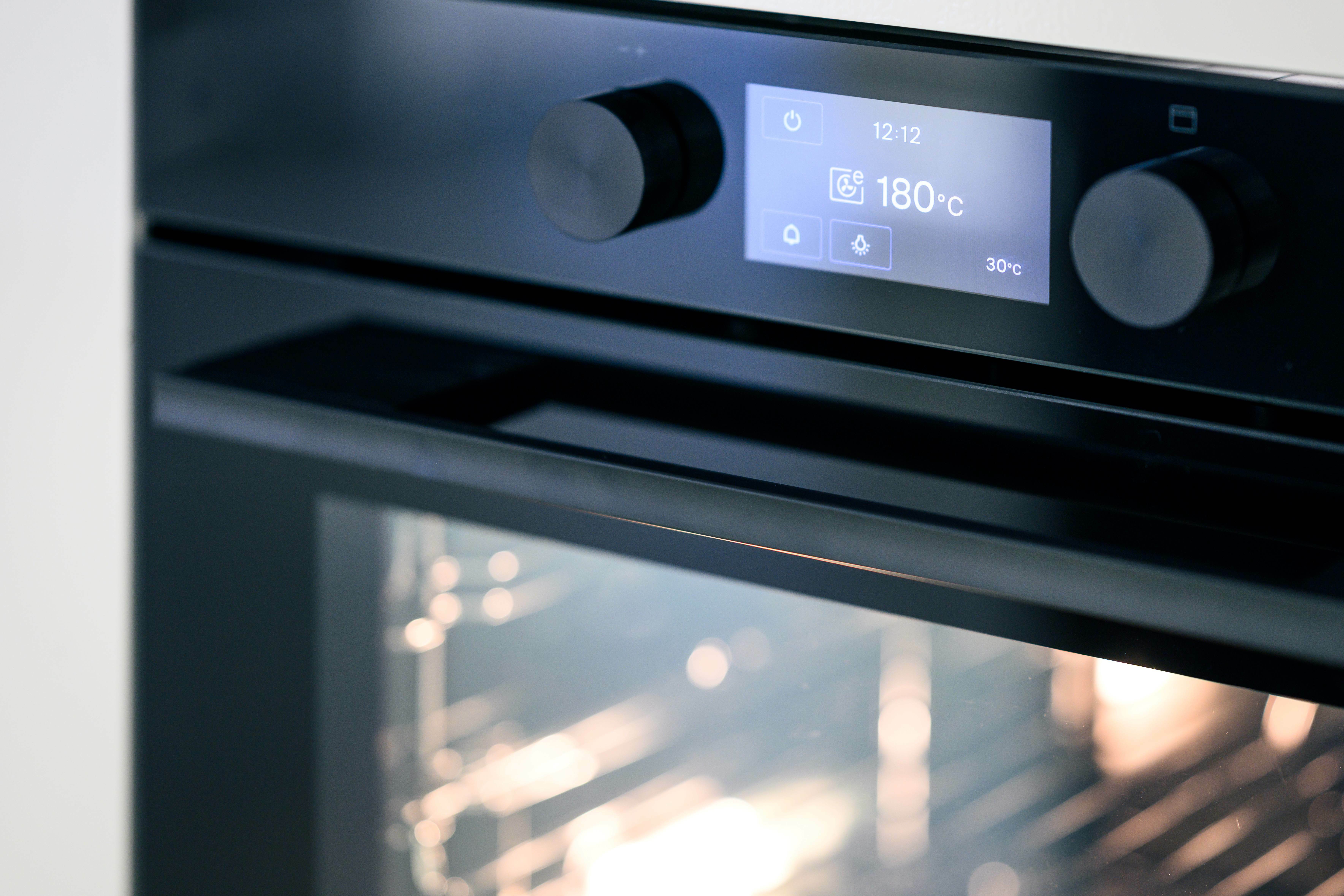
Why might pyrolysis stop working?
If the function fails to start, this may be due to several reasons: the door does not close properly, the appliance indicates an error message or the necessary temperature is not reached. In these cases, calling the SIBIR customer service can help.
Can I stop pyrolysis once it has started?
Some appliances allow the cleaning function to be stopped manually, but the door will remain locked until the temperature has fallen considerably.
Summary: does a self-cleaning oven make sense?
Definitely, if you understand how it works. A self-cleaning oven saves time, effort and in many cases cleaning products. Anyone who uses pyrolysis with care and follows a few rules will not only have a clean appliance, but also peace of mind. A self-cleaning oven is by no means a luxury gadget, but a genuine help in the kitchen. Especially when you know the rules and give the appliance a little attention from time to time. After all, even in times of pyrolysis, manual effort is not entirely dispensable. Door seals, grooves and edges still need to be cleaned by hand – ideally with a soft cloth, a little patience and a good eye for detail. By combining technology and manual cleaning properly, you are not only able to enjoy a clean oven but also the pleasant feeling of having order in your kitchen – without the extensive use of chemicals. And in all honesty: who could deny the appeal of a self-cleaning oven?
